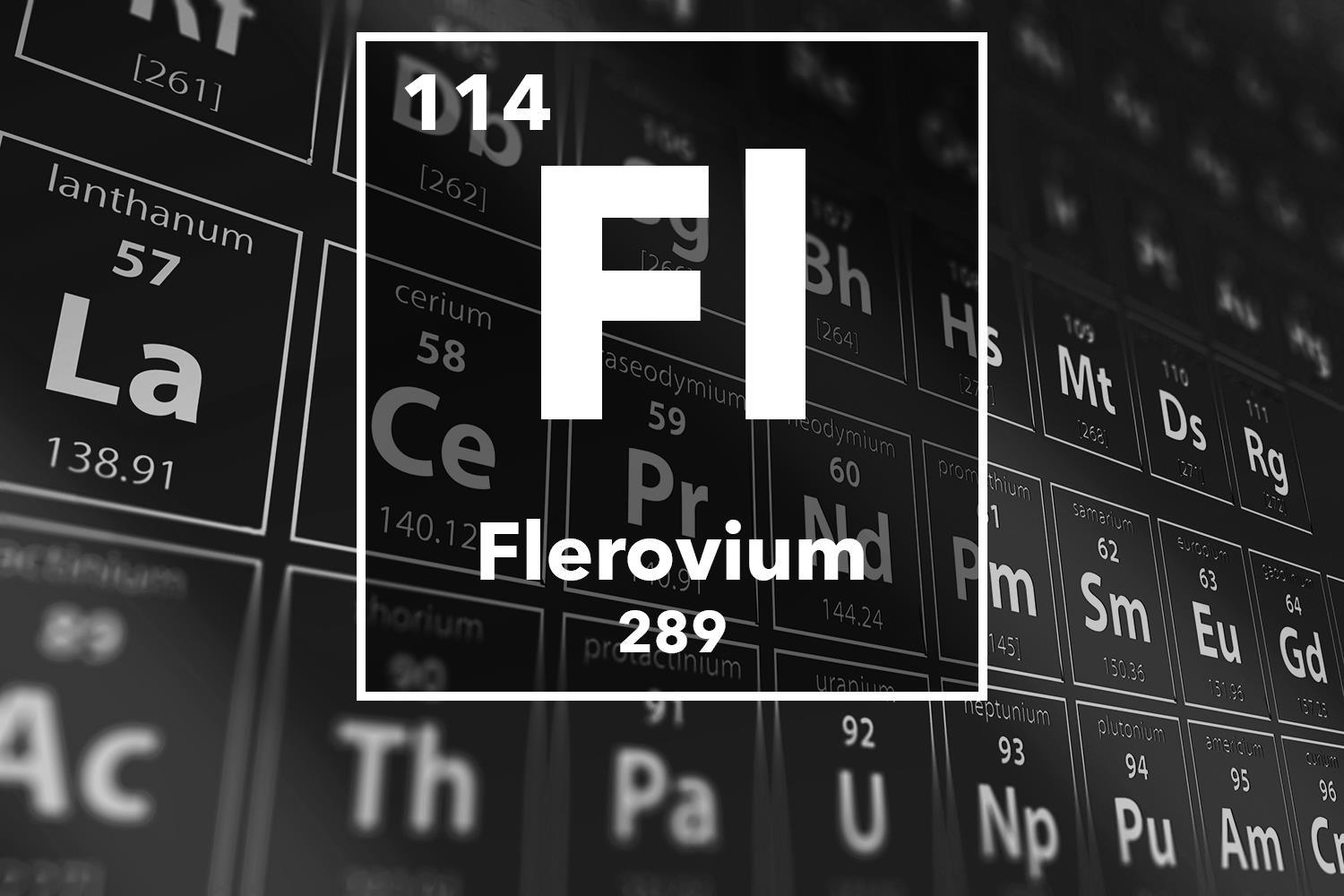Identity.
Meet flerovium, symbol Fl, atomic number 114. Born not in nature's
furnace, but in the controlled chaos of nuclear labs, this superheavy
element is a fleeting marvel. Named after its Russian birthplace, it
exists for mere seconds before decay. Although categorized with metals
like lead and tin, it surprises with volatile tendencies, even hinting
at similarities to noble gases. Its identity remains an enigma,
waiting for further research to unlock its secrets and illuminate the
uncharted territory of superheavy elements.
History.
In 1998, the Joint Institute for Nuclear Research in Dubna, Russia,
witnessed a remarkable feat. Scientists, led by Yuri Oganessian and
Vladimir Utyonkov, successfully forged element 114, later named
flerovium (Fl) in honor of the lab's namesake. The process involved
bombarding plutonium with calcium ions, producing a single atom of
flerovium-289 with a fleeting lifespan of about 21 seconds.
Confirmation wasn't immediate. Initial results were disputed,
leading to further experiments in 1999. This time, two flerovium
atoms were detected, boasting a half-life of 2.6 seconds. However,
confusion arose regarding the isotope involved. Finally, in 2002,
the team definitively connected these atoms to flerovium-289,
solidifying the discovery.
Today, four isotopes of flerovium are known, with flerovium-289
holding the crown for stability at a measly 0.97 seconds. The
element's existence serves as a stepping stone in understanding
the "island of stability" theorized around element 114, where
superheavy elements might defy their usual short-lived nature.
While flerovium remains a laboratory curiosity, its story is still
unfolding, offering glimpses into the exotic realm of superheavy
elements and pushing the boundaries of our understanding of matter
itself.
Usage.
Show drafts While nihonium's fleeting existence means it can't power
your phone or cure diseases, its significance lies in unlocking the
secrets of the unseen. This synthetic element serves as a stepping
stone, helping scientists peer deeper into the realm of superheavy
elements and test the boundaries of the periodic table. Think of it as
a key, opening doors to future discoveries that could revolutionize
fields like nuclear physics and our understanding of the universe
itself. So, while nihonium won't be in your next gadget, its role in
scientific exploration makes it a valuable piece in the puzzle of
knowledge.
-
Expanding the Periodic Table: Flerovium fills a gap in the
7th period of the periodic table, helping us chart the complete
picture of elements and their properties. This knowledge
contributes to a deeper understanding of atomic structure and the
forces that govern it.
-
Testing Nuclear Theories : Studying flerovium's decay and
behavior allows scientists to test and refine theories about
nuclear stability and radioactive processes. This knowledge can be
applied to understand and predict the behavior of other superheavy
elements, furthering our understanding of the atomic nucleus.
-
Searching for the "Island of Stability": Flerovium's
existence provides clues about the theorized "island of
stability," a region where superheavy elements might exhibit
significantly longer lifespans. Finding these stable isotopes
could open doors to new materials with unique properties and
potential applications.
-
Pusing the bondaries of Science: Research on flerovium
pushes the boundaries of scientific achievement in terms of
creating and studying incredibly rare and short-lived elements.
This advancement in technology and experimental techniques can be
applied to other scientific fields beyond nuclear physics.
Some of the benefits of using Flerovium are:
-
Flerovium helps us map the uncharted territory of superheavy
elements, revealing new information about atomic structure,
nuclear forces, and the evolution of elements in the universe.
This knowledge deepens our overall understanding of the
fundamental building blocks of matter.
-
Research on flerovium involves cutting-edge techniques in nuclear
physics and particle accelerators. These advancements can have
broader applications in other scientific fields, leading to new
discoveries and innovations across various disciplines.
-
By studying flerovium's unique decay patterns and stability,
scientists can test and refine theories about nuclear processes
and the behavior of atomic nuclei. This knowledge improves our
ability to predict and understand radioactive phenomena,
potentially with applications in areas like nuclear energy and
waste management.
-
Flerovium embodies the spirit of scientific exploration, pushing
the boundaries of human knowledge and understanding. The quest to
create and study such exotic elements inspires future generations
of scientists and engineers, fostering innovation and discovery in
various fields.
